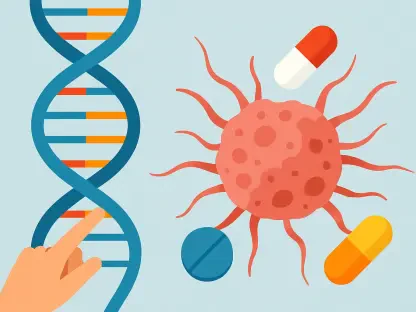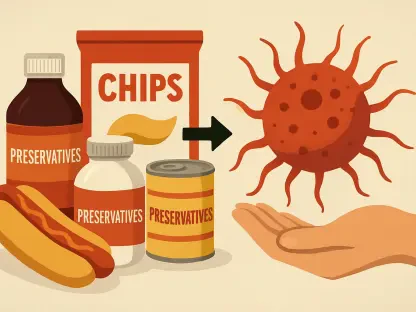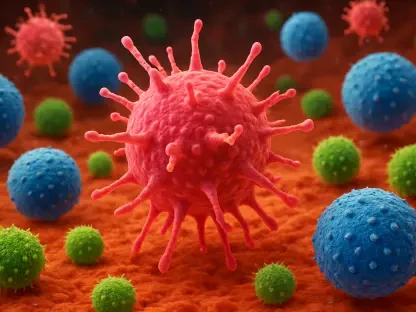In the dynamic world of biopharma, few individuals possess as vast an understanding of technology and innovation in the field as Ivan Kairatov. With a solid background in research and development, Ivan offers invaluable insights into the recent advancements and decisions impacting the pharmaceutical industry. Today, we delve into the significant recommendation by the National Institute for Health and Care Excellence (NICE) regarding the use of Novartis’ Kisqali for a broader population of early breast cancer patients.
What is the significance of NICE recommending Kisqali for a broader early breast cancer population?
The recommendation by NICE is quite a breakthrough for the treatment of early breast cancer. Previously, Kisqali was primarily available for those whose cancer had spread to the lymph nodes. Now, it marks a significant expansion as it allows a broader range of patients, specifically those with HR-positive/HER2-negative early breast cancer, to access this treatment. This expansion is pivotal because it potentially changes outcomes for many who are at high risk of recurrence following initial therapies.
Can you explain how Kisqali is used in combination with an aromatase inhibitor? What role does an aromatase inhibitor play in breast cancer treatment?
Kisqali, when combined with an aromatase inhibitor, becomes an effective hormone therapy regimen. Aromatase inhibitors work by reducing estrogen levels in the body, thereby slowing or stopping the growth of cancers that need estrogen to grow. By combining this with Kisqali, which targets specific proteins involved in cancer cell growth, the treatment can be more effective in managing early breast cancer.
Who are the patients eligible for this new treatment option with Kisqali? What specific criteria must they meet?
Eligible patients are primarily those with hormone receptor-positive, HER2-negative early breast cancer who have responded to initial treatments such as surgery. Moreover, they must be at a high risk of disease recurrence. These criteria ensure that the treatment is offered to those who are most likely to benefit based on their risk profile.
How does this new decision by NICE expand access to Kisqali compared to its previous availability?
Prior to this recommendation, Kisqali was only available to a narrower patient group — specifically, those with lymph node involvement. The new decision widens this access significantly by including those at high risk of recurrence after initial treatment, even if there has been no lymph node spread. This broader access can lead to early intervention, potentially reducing recurrence and improving long-term outcomes.
What were the main findings of the late-stage NATALEE trial that supported the NICE recommendation? How did Kisqali perform compared to treatment with an aromatase inhibitor alone?
The NATALEE trial played a crucial role in the NICE recommendation. The findings demonstrated that when Kisqali was used with an aromatase inhibitor, there was a substantial reduction in invasive disease-free survival events by 25.1% compared to using an aromatase inhibitor alone. This considerable improvement underscores the enhanced efficacy of the combination treatment.
Can you elaborate on the nature of the cost-effective agreement between Novartis and the NHS for the provision of Kisqali?
While specific financial details remain confidential, Novartis reached an agreement with the NHS that ensures Kisqali is provided at a cost-effective rate. This agreement is vital as it maintains the affordability of the treatment, allowing the health service to ensure a wider patient population can benefit without undue financial burden.
Why is HR-positive/HER2-negative a significant subtype of breast cancer, and how common is it in the UK?
HR-positive/HER2-negative is the most prevalent breast cancer subtype, representing a substantial proportion of breast cancer cases, with thousands diagnosed annually in the UK. This subtype relies on hormones to grow, making hormone-targeted therapies like Kisqali particularly crucial. Addressing such a widespread subtype means that the potential impact on public health is significant.
What long-term risks do patients with HR-positive/HER2-negative early breast cancer face despite current treatments?
Despite existing treatment options, patients still face a notable risk of recurrence, often many years after initial treatment. Some recurrences may become incurable. This long-term risk necessitates new treatment strategies that can reduce these chances and improve survival rates.
How does Kisqali work to inhibit cancer cell growth and division? What are CDK4/6 proteins and their role in cancer progression?
Kisqali targets the CDK4/6 proteins, which are vital in regulating the cell cycle. By inhibiting these proteins, Kisqali essentially halts the cell division process, thus preventing cancer cells from multiplying. This mechanism is particularly effective in controlling the progression of hormone-sensitive cancers.
What has been the response from healthcare professionals and patients to the expanded use of Kisqali?
The response has been overwhelmingly positive. Healthcare professionals appreciate having more tools in their arsenal to combat early-stage breast cancer, and patients welcome the increased options, especially those in high-risk categories. Access to such advanced treatments brings hope and potentially better outcomes.
How do you think Kisqali’s expanded access will impact the overall approach to treating early-stage breast cancer in the UK?
Expanding access to Kisqali could revolutionize the treatment landscape for early-stage breast cancer. With more patients receiving efficient treatments earlier, there is potential for improved survival rates and reduced recurrence. Its impact might encourage further innovations and adjustments in treatment protocols nationwide.
Can you discuss the role of collaboration between companies like Novartis and organizations like NICE in making treatments available to more patients?
Collaborations between pharmaceutical companies and health organizations like NICE are crucial. They enable a thorough evaluation of treatments, ensuring their efficacy and safety while also negotiating fair pricing. Such partnerships are essential in transforming cutting-edge research into accessible therapies, ultimately benefiting a broader patient base.
Do you have any advice for our readers?
For those navigating the complexities of cancer treatment, staying informed is paramount. Leveraging resources like patient advocacy groups and maintaining open communication with healthcare providers can make a significant difference. Understanding available options can empower patients to make the best decisions for their health.









